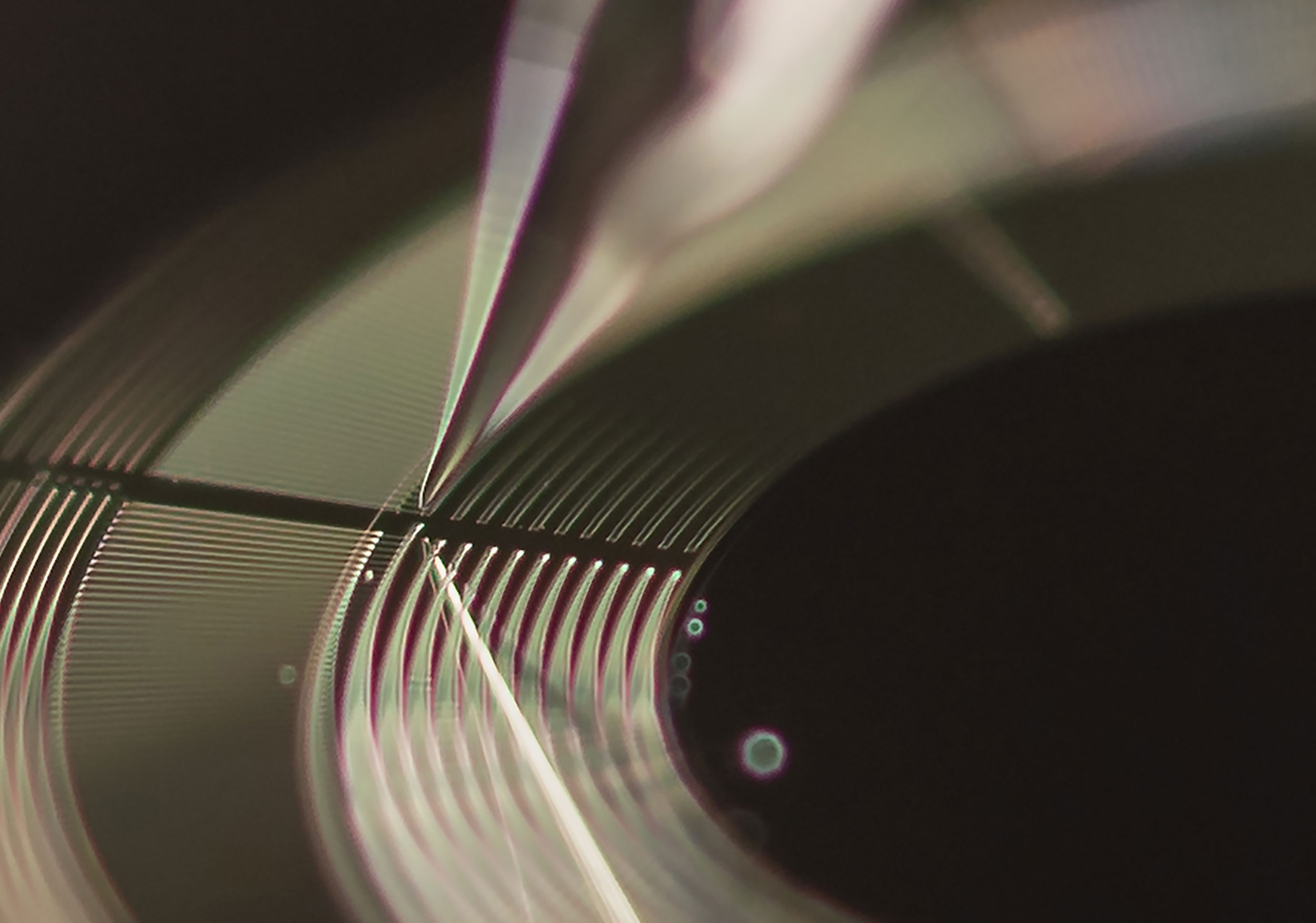Microhydraulic Actuator

MIT Lincoln Laboratory’s novel microhydraulic actuator offers low voltage, high torque density, high efficiency, and high precision in a package scalable to miniaturized systems. To extend the capability of electrostatic electrowetting motors, Laboratory researchers integrated the electrode and droplet arrays into one thin film layer that can be stacked in 3D configurations that provide desired characteristics for various applications.

Motivation
The world runs on motors. Electric motors are an efficient, well developed solution for running many commonplace systems, like cars, refrigerators, or fans. But the increasing miniaturization of systems demands capable motors that scale to incredibly small sizes. Microhydraulic motors (or actuators) offer a solution to creating motors at microscales. Such actuators have already demonstrated low voltage, high torque density, and high efficiency.
Lincoln Laboratory Advancement
Microhydraulic actuators work on the electrowetting technique that applies an electrical voltage to water droplets on a solid surface to distort the surface tension of the liquid. Actuators leverage this distortion to force water droplets inside the actuator to move, and with them, the entire actuator. The original microhydraulic motors, invented at Lincoln Laboratory, actuated a thin polyimide film on top of a thick base. Recently, the Laboratory has extended the functionality of these actuators by integrating the electrode and droplet arrays into one thin film layer, with the droplet array on one side and the electrode array on the other. Multiples of this layer can be stacked yet individually powered with a liquid interconnect network. This stacking capability allows the Lincoln Laboratory microhydraulic actuator to be configured to optimize the characteristics (e.g., power, torque) needed for particular applications.
Benefits
- Multilayer design enables a high torque that results in a fast reaction time, with the actuators able to accelerate to full power and speed in <125 microseconds
- Different configurations of layers allow for actuators with multiple speed and force profiles without the use of gears
- All solid, moving components are isolated by a fluidic layer, thus avoiding stiction and abrasion issues common in microelectromechanical motors
Potential Use Cases
- Precision robotics for minimally invasive surgeries
- Responsive robotic joints and "muscles" for use in exoskeletons or artificial limbs
- Programmable and self-assembling materials
- Microscale optical systems
Additional Resources
More Information
J. Kedzierski and H. Chea, “Multilayer Microhydraulic Actuators with Speed and Force Configurations,” Nature: Microsystems & Nanoengineering 7 (22), 2021.
2021 R&D 100 Award winner